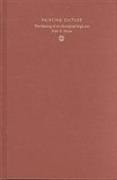Read more
"Fred R. Myers has been in a unique position as a participant-observer of an art movement from its local beginnings to its international recognition. This book is a work of enormous significance, relevant to debates in contemporary art theory and cultural studies as well as in anthropology."--Howard Morphy, Australian National University
List of contents
Acknowledgements
Prologue
Introduction: From Ethnoaesthetics to Art History
1. Truth or Beauty: The Revelatory Regime of Pintupi Painting
2. Practices of Painting: A Local History and a Vexed Intersection
>
3. The Aesthetic Function and the Practice of Pintupi Painting: A Local Art History
4. Making a Market: Cultural Policy and Modernity in the Outback
>
5. Burned Out, Outback: Art Advisers Working between Two Worlds
6. The “Industry”: Exhibition Success and Economic Rationalization
7. After the Fall: In the Arts Industry
8. Materializing Culture and the New Internationalism
9. Performing Aboriginality at the Asia Society Gallery
10. Postprimitivism: Lines of Tension in the Making of Aboriginal High Art
11. Unsettled Business
12. Recontextualizations: The Traffic in Culture
Appendix: A Short History of Papunya Tula Exhibition, 1971-1985
Notes
References
Index
About the author
Fred R. Myers
Summary
Suitable for art historians, as well as those in cultural anthropology, cultural studies, museum studies, and performance studies, this book tells the story of how the acrylic "dot" paintings of central Australia were transformed into objects of international high art, eagerly sought by upscale galleries and collectors.

